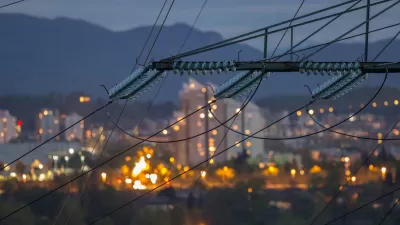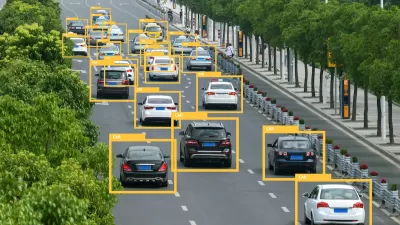Explore financial cybersecurity in smart cities, addressing urban vulnerabilities and strategies for protection.

As cities become increasingly digitally connected, their financial infrastructures become prime targets for cyber attacks. Smart city technology oversees many critical operations, all of which are enticing to malicious actors. With everything interconnected, a successful attack in one area can have a rippling effect on other areas. Ensuring robust cybersecurity in smart cities has never been more paramount.
Potential risks and vulnerabilities in smart cities
The rapid proliferation of IoT devices in highly connected urban environments creates a larger attack surface. As systems find more ways to communicate across an entire city, there are more potential entry points for cybercriminals to exploit.
Financial risks
A breach in one system exposes data from other points. For example, hackers accessing a food delivery IoT sensor network could obtain lateral access to money transfer systems if they are interconnected.
Smart cities rely on a constant flow of rich data, including sensitive financial information like account details, payment histories, billing addresses, and more. Threat actors can exploit vulnerabilities in the infrastructure to steal confidential data.
The resulting loss can be catastrophic. IBM estimates the average cost of a data breach at over $4.4 million in 2023. However, that’s only at the organizational level. The magnitude of financial loss on a city-wide scale will undoubtedly be higher.
Attack vectors
Criminals can launch attacks on smart city infrastructure in several ways. Ransomware is the primary concern, as the interconnected network means a single attack may impact an unlimited number of systems.
For example, if a hacker accessed the city’s smart grid, it could result in power outages, which would impact critical facilities such as health care and emergency services. As a result, cities are more likely to pay a ransom. Average ransom demands in 2022 reached over $7.2 million and will likely be higher in subsequent years.
Phishing is another huge issue. Smart city citizens could click on unsuspecting links, providing cybercriminals an entry point for attacks.
There’s also an increased risk of third-party attacks. Cities often work with external vendors to assist in implementing new technology. However, this can create potential vulnerabilities in the network if these third parties do not practice proper cybersecurity hygiene.
How can these risks be mitigated?
Securing financial transactions and sensitive data in smart cities requires a 360° approach to prevent breaches. This involves safeguarding the citizen-facing end and the internal processes related to vendors and systems. At the very least, smart city infrastructure must include the following cybersecurity measures.
Encryption
Data encryption in transit and at rest ensures that even if unauthorized individuals gain access, they cannot decipher the information without the designated key.
Multi-factor authentication
MFA requires users to provide two or more forms of authentication — fingerprints, iris scans, one-time passwords — for an extra layer of security against potential attacks.
Blockchain technology
The decentralized nature of the blockchain means the network is not controlled by a single entity, making it resistant to single points of vulnerability. Additionally, blockchains utilize immutable ledgers, so data recorded on them cannot be altered or deleted, ensuring the integrity of financial transactions.
AI and machine learning
Smart cities can leverage AI-powered systems to analyze transaction patterns and detect anomalies that may indicate cyber risk. Advanced machine learning models can also be configured to predict potential security threats and automatically implement mitigation measures.
Awareness training
Human error represents a major vulnerability in smart city infrastructure. Residents need regular training on cybersecurity awareness and best practices. For instance, they can learn to identify the usual signs of phishing, such as generic greetings and typo-ridden messages.
Incorporate cybersecurity into the planning process
The United States is expected to invest $41 trillion to upgrade smart city infrastructure over the next 20 years. A sizable chunk of this budget must be allotted to cybersecurity for financial ecosystems.
Moreover, government leaders, urban planners, and other key stakeholders must make security principles integral to smart city governance. Well-defined cross-sector collaboration can minimize a significant cybersecurity incident's likelihood and financial impact.
Implement Financial Cybersecurity in Smart Cities
The reliability and trustworthiness of a smart city stand or fall with the ability to safeguard financial infrastructures from hackers. Stakeholders must employ a multifaceted approach to secure sensitive data, leveraging blockchain technology, AI systems, encryption, and other advanced technologies to realize the benefits of interconnected urban environments.

Study: Maui’s Plan to Convert Vacation Rentals to Long-Term Housing Could Cause Nearly $1 Billion Economic Loss
The plan would reduce visitor accommodation by 25,% resulting in 1,900 jobs lost.

North Texas Transit Leaders Tout Benefits of TOD for Growing Region
At a summit focused on transit-oriented development, policymakers discussed how North Texas’ expanded light rail system can serve as a tool for economic growth.

Using Old Oil and Gas Wells for Green Energy Storage
Penn State researchers have found that repurposing abandoned oil and gas wells for geothermal-assisted compressed-air energy storage can boost efficiency, reduce environmental risks, and support clean energy and job transitions.

Santa Barbara Could Build Housing on County Land
County supervisors moved forward a proposal to build workforce housing on two county-owned parcels.

San Mateo Formally Opposes Freeway Project
The city council will send a letter to Caltrans urging the agency to reconsider a plan to expand the 101 through the city of San Mateo.

A Bronx Community Fights to Have its Voice Heard
After organizing and giving input for decades, the community around the Kingsbridge Armory might actually see it redeveloped — and they want to continue to have a say in how it goes.
Urban Design for Planners 1: Software Tools
This six-course series explores essential urban design concepts using open source software and equips planners with the tools they need to participate fully in the urban design process.
Planning for Universal Design
Learn the tools for implementing Universal Design in planning regulations.
Ascent Environmental
Borough of Carlisle
Institute for Housing and Urban Development Studies (IHS)
City of Grandview
Harvard GSD Executive Education
Toledo-Lucas County Plan Commissions
Salt Lake City
NYU Wagner Graduate School of Public Service






























